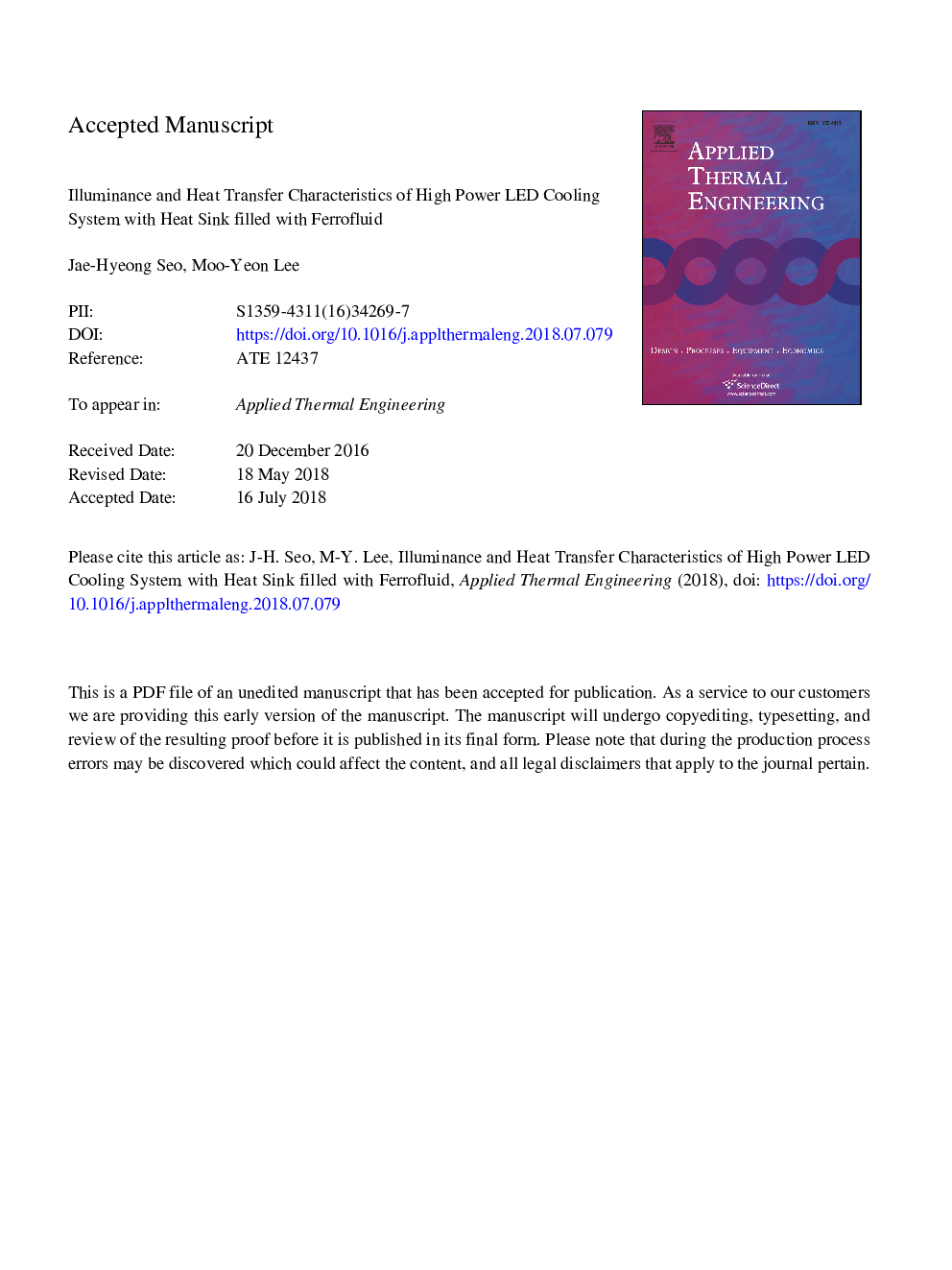| Article ID | Journal | Published Year | Pages | File Type |
|---|---|---|---|---|
| 7044685 | Applied Thermal Engineering | 2018 | 40 Pages |
Abstract
In the case of a high power LED (light emitting diode) cooling system using the ferrofluid, the illuminance characteristics, including the illuminance and the illuminance efficacy, as well as the heat transfer characteristics, including the temperature and the thermal resistances, were experimentally investigated under various input voltages and magnetic fields and compared with air and water working fluids. The temperatures of the LED surface, the heatsink surface, and the LED junction of the high power LED cooling system with ferrofluid all increased with a rise in the input voltages. The illuminance of the high power LED cooling system with the ferrofluid also increased with increases in the input voltage until an elapsed time of 1200â¯sec, but the illuminance of the high power LED cooling system dramatically decreased at 19.3â¯V, due to the increased power consumption. The junction temperature and the illuminance efficacy of the high power LED cooling system with the magnet decreased at all input voltages by 9.7% and increased by 6.9%, respectively, compared to those without the magnet. The high power LED cooling system with the ferrofluid at an elapsed time of 3600â¯sec showed 67.5% and 66.1% higher illuminances than those of the air and the water, respectively. As a result, the cooling and optical performances could be improved using the ferrofluid as the cooling liquid, and could be further enhanced by applying the external magnetic field. In addition, the designed LED cooling system with the thin fin heat sink filled with the ferrofluid is suggested as a potential vehicle headlamp considering the illuminance for visibility and effective cooling.
Related Topics
Physical Sciences and Engineering
Chemical Engineering
Fluid Flow and Transfer Processes
Authors
Jae-Hyeong Seo, Moo-Yeon Lee,
